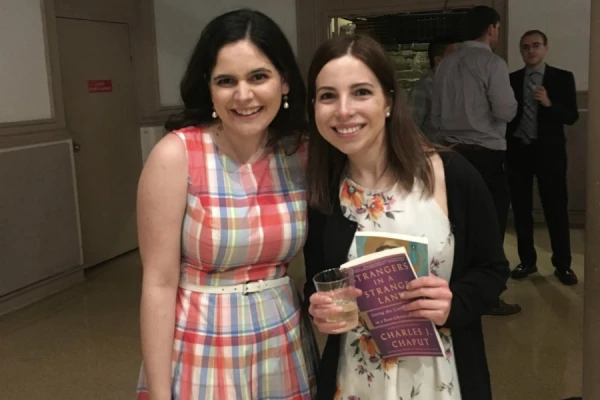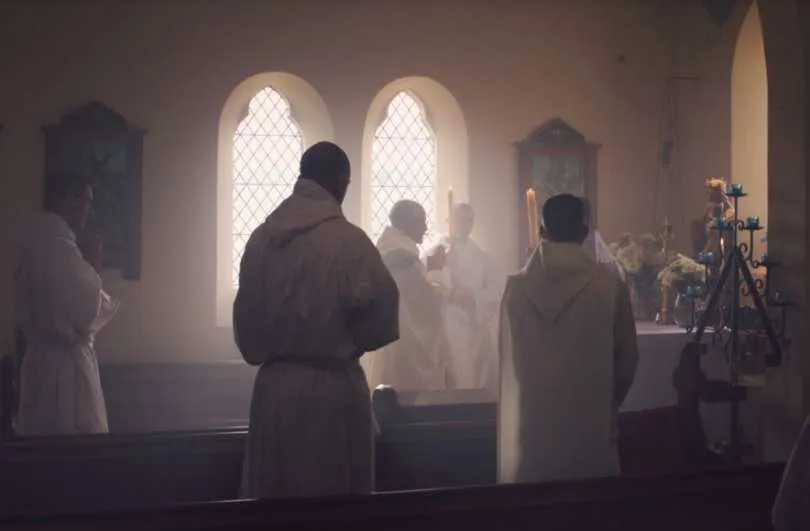
For Catholics, wearing masks can be an act of charity for neighbor

Denver Newsroom, May 14, 2020 / 03:09 pm (CNA).- Although some people have raised objections to wearing masks as the U.S. continues to battle the coronavirus pandemic, doing so can be an act of charity for one’s neighbor, a Catholic doctor said.
“The simple reason [to wear a mask] is primarily to protect others, the secondary reason is to protect oneself. Masks are a barrier to the airborne droplets that can carry the virus and infect anyone who breathes them in,” said Dr. Barbara Golder, a physician, lawyer and bioethicist with a background in pathology.
Golder told CNA that wearing a mask while in public is “a small thing to do, and it may well save lives.”
The United States has seen more than 1.3 million confirmed cases of the novel coronavirus, with more than 82,000 deaths, according to the Johns Hopkins Coronavirus Resource Center. Most people who contract the highly contagious virus show mild or no symptoms, but in some cases, it can result in severe complications or death, particularly for those who are elderly or have underlying health conditions.
With much of the country under quarantine restrictions in recent weeks to slow the spread of the virus, the question of when and how to reopen continues to be a source of controversy.
Public health officials have advised wearing masks in public, in order to reduce the risk of unknowingly transmitting the virus through droplets emitted from one’s mouth when speaking, coughing or sneezing. Many individuals who are infected with the virus do not develop symptoms, meaning that even people who do not feel sick could spread the virus to others.
Based on this federal guidance, many local authorities have issued regulations recommending or requiring that people wear masks in public settings.
These regulations have received a mixed response. Some critics argue that the mandatory regulations – and the fines and other punishments that accompany them – in some states are too harsh, infringing upon essential freedoms. Others worry that the use of masks may be ineffective or even harmful, claims which public health experts dispute.
Others have criticized the wearing of masks as a sign of weakness.
R. R. Reno, editor of the Catholic journal First Things, has been outspoken in his criticism of quarantine measures enacted in New York and other parts of the country. In a series of tweets this week – which were later deleted – Reno encouraged people to eschew masks, which he described as caving to a culture of fear.
“Masks=enforced cowardice,” Reno said in one tweet.
“The mask culture if (sic) fear driven,” he said in another, adding, “It’s a regime dominate (sic) by fear of infection and fear of causing of infection. Both are species of cowardice.”
However, Dr. Golder objected to the claim that following the guidance of public health officials is succumbing to fear or weakness.
“It isn’t fear to exercise prudent care for ourselves and others,” she told CNA. “This is a serious situation…When 60% of the population falls into a risk group because of age or an underlying medical condition such as obesity, diabetes, heart disease, or lung disease, it’s prudent to try to avoid infection.”
Golder acknowledged that conflicting advice early in the pandemic may be confusing, but explained that federal guidance has changed as scientists have learned more about the new virus and how it is spread.
“We now know that it is communicable by aerosol droplets that are expelled by coughing, sneezing, and even, to a certain extent, by breathing,” she said. “We also know that this happens even in patients who are infected and shedding virus but who do not have symptoms.”
For this reason, masks – along with social distancing – are an important tool in fighting the spread of the disease, she said.
“Wearing a mask limits the possibility of dispersing infective particles in the air, as well as reducing the risk of inhaling them,” she said.
Golder noted that small children, those who have breathing difficulties, and those who are physically unable to put on a mask need not wear one, but added that they may want to significantly limit contact with others.
But for most Americans, she said, “wearing a mask is a way of exercising our care for the other, who could be harmed if we do not.”
Leah Libresco Sargeant, author of “Building the Benedict Option,” echoed the idea that wearing a mask is a way of showing love for one’s neighbors.
“It’s much more a question of care than of fear,” she told CNA.
While masks may be somewhat uncomfortable, they are a small inconvenience that can be embraced out of charity for others, Sargeant suggested.
“Mask wearing is a small, humdrum discipline. It’s harder to romanticize than a big gesture,” she said.
“Think about the difference between going on a big pilgrimage and keeping up a habit of daily prayer, including in times of spiritual dryness. We have to do it out of love—there’s no other way to sustain the dull parts of caring for others.”
Dr. Golder acknowledged there are legitimate concerns about government overreach with some of the mandates surrounding masks and other pandemic limitations.
“[I]t’s absolutely true that there has been some overreach of government officials in imposing restrictions in various places,” she said.
“There is a real possibility of infringement of our constitutional rights and those charged with protecting our rights are hard at work to prevent that,” she added, pointing to court rulings blocking some of these regulations as signs that the American system is working.
But ultimately, Golder said, Catholics may want to consider the question of public health not solely from a perspective of rights, but from the viewpoint of service and friendship to which Christ calls us.
“God as man never once asserted his many ‘rights’ against us, maintaining to the last his role as servant and friend,” she said. “I think that might be the model here—How do I as friend and servant act in the presence of others? Wearing a mask might be a good start these days.”









